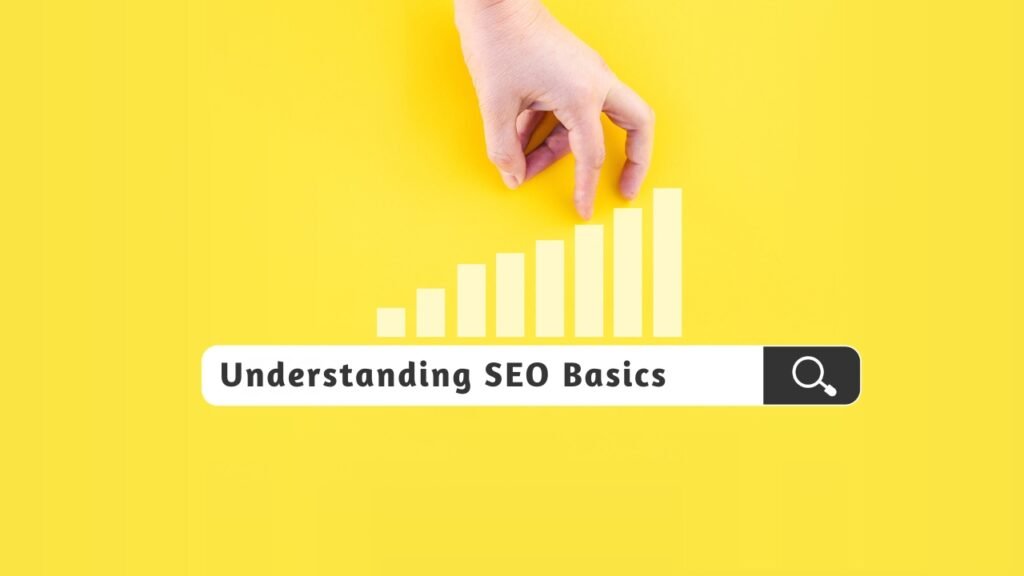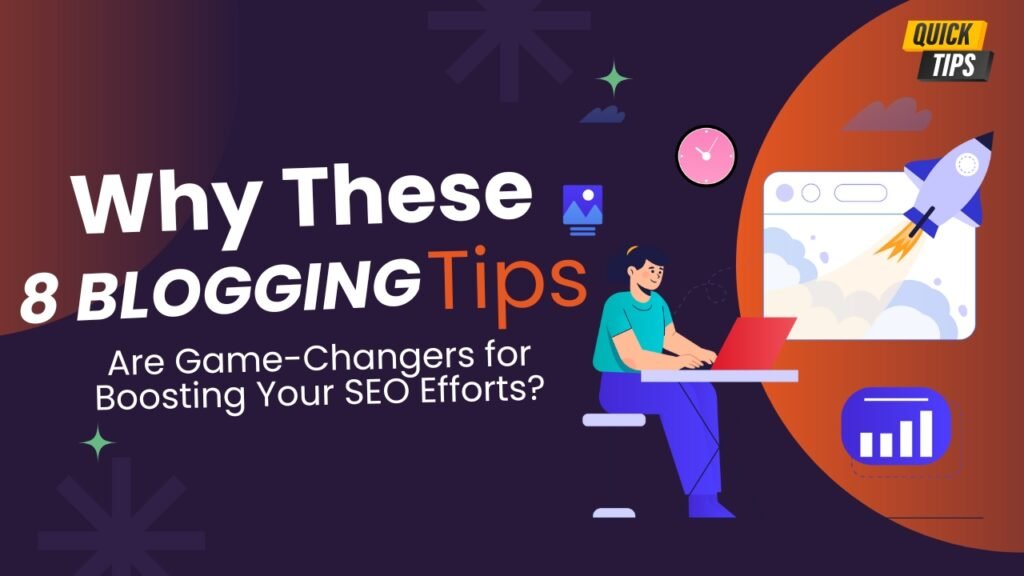In the fast-paced world of blogging, staying ahead of the curve with SEO is crucial. Many bloggers are constantly searching for ways to enhance their traffic and boost their visibility online. Achieving a 300% increase in traffic is ambitious, but with the right strategies and tips, it’s absolutely possible. This comprehensive guide will delve into actionable SEO tips designed specifically for bloggers to help you achieve this remarkable growth.
Understanding SEO Basics

SEO, or Search Engine Optimization, is the practice of enhancing your website or blog to rank higher in search engine results pages (SERPs). For bloggers, understanding SEO basics is the first step toward increasing traffic. SEO involves various elements, including keyword optimization, content quality, and technical aspects of your website.
SEO is crucial because it helps your blog become more visible to search engines, making it easier for potential readers to find your content. By optimizing different aspects of your blog, you ensure that your content reaches a larger audience and attracts more organic traffic.
Key Points:
- Keyword Integration: Incorporating relevant keywords into your blog posts helps search engines understand what your content is about.
- Content Quality: High-quality, engaging content that provides value to readers can improve your SEO rankings.
- Technical SEO: Ensuring your website is technically sound, with fast load times and proper indexing, is vital for SEO success.
Keyword Research: Finding the Right Keywords
Keyword research is a fundamental aspect of SEO. It involves identifying the terms and phrases that potential readers are using to search for content related to your blog. Effective keyword research helps you target the right audience and increases the chances of your blog appearing in relevant search results.
Steps for Keyword Research:
- Brainstorm Seed Keywords: Start with broad terms related to your niche.
- Use Keyword Research Tools: Tools like Google Keyword Planner, Ahrefs, and SEMrush can help you find relevant keywords and analyze their search volume and competition.
- Analyze Competitors: Look at the keywords your competitors are targeting to find opportunities for your own blog.
Tips for Choosing Keywords:
- Relevance: Ensure the keywords are relevant to your blog content.
- Search Volume: Target keywords with a high search volume for more traffic.
- Competition: Consider the competition level; less competitive keywords may be easier to rank for.
On-Page SEO Techniques
On-page SEO refers to the optimization of individual web pages to rank higher and earn more relevant traffic. It involves various elements, including headings, meta descriptions, and content formatting. Proper on-page SEO ensures that search engines can easily understand and index your content.
Important On-Page SEO Elements:
- Title Tags: Include your main keyword and keep it under 60 characters.
- Headings (H1, H2, H3, etc.): Use headings to structure your content and include relevant keywords.
- Meta Descriptions: Write compelling meta descriptions with target keywords to improve click-through rates.
- URL Structure: Use clean and descriptive URLs that include your main keyword.
Creating High-Quality Content
Creating high-quality content is the cornerstone of successful blogging. Quality content not only attracts readers but also encourages them to spend more time on your blog, which can positively impact your SEO rankings.
Tips for High-Quality Content:
- Provide Value: Your content should offer valuable information, insights, or solutions to your readers’ problems.
- Engage Your Audience: Use a conversational tone, personal anecdotes, and engaging visuals to keep readers interested.
- Ensure Readability: Break up text with headings, bullet points, and short paragraphs to enhance readability.
Optimizing Meta Tags
Meta tags are snippets of text that describe a webpage’s content. They appear in the HTML code and can influence how your page appears in search engine results. Proper optimization of meta tags can improve your visibility and click-through rates.
Key Meta Tags to Optimize:
- Title Tag: Craft a compelling and keyword-rich title tag for each page.
- Meta Description: Write a concise meta description that accurately reflects the content and encourages clicks.
- Meta Keywords: Although less important today, some blogs still use meta keywords to target specific terms.
Leveraging Internal Linking
Internal linking involves linking to other pages within your own website or blog. It helps distribute page authority and can improve user experience by making it easier for readers to navigate related content.
Benefits of Internal Linking:
- Improved SEO: This helps search engines crawl and index your site more effectively.
- Enhanced User Experience: Guides readers to additional relevant content, increasing time spent on your site.
- Better Page Authority Distribution: Distributes link equity across your site, improving the ranking potential of various pages.
The Power of External Links
External links, or outbound links, are links that point from your blog to other websites. Linking to authoritative and relevant sources can enhance the credibility of your content and provide additional value to your readers.
Benefits of External Linking:
- Enhanced Credibility: Linking to authoritative sources can boost your blog’s credibility.
- Increased Trust: Provides readers with additional resources for further reading.
- Potential for Backlinks: Encourages other sites to link back to your content.
Improving Page Load Speed
Page load speed is a critical factor for both the user experience and SEO. Slow-loading pages can lead to higher bounce rates and lower search engine rankings.
Tips to Improve Page Load Speed:
- Optimize Images: Compress and resize images to reduce their impact on load times.
- Minimize HTTP Requests: Reduce the number of elements on your page to decrease load times.
- Enable Browser Caching: Store static resources locally to speed up future visits.
Mobile Optimization Strategies
With the increasing use of mobile devices to access the internet, mobile optimization has become essential. A mobile-friendly blog ensures a positive user experience and improves your chances of ranking higher in search results.
Mobile Optimization Tips:
- Responsive Design: Use a responsive design that adjusts to different screen sizes.
- Mobile-Friendly Navigation: Ensure easy navigation and readability on mobile devices.
- Optimize Touch Elements: Make sure buttons and links are easily clickable on touch screens.
Enhancing User Experience (UX)
User experience (UX) refers to the overall experience a user has when interacting with your blog. A positive UX can lead to higher engagement, longer visit durations, and improved SEO rankings.
Key UX Factors:
- Design and Layout: Create a clean and intuitive design that is easy to navigate.
- Content Readability: Ensure that your content is easy to read with a clear font and sufficient spacing.
- Interactive Elements: Incorporate interactive elements like polls, quizzes, or comment sections to engage users.
Must Read: SEO Tips for Local Businesses to Attract More Customers in 2024
Utilizing Social Media for SEO
Social media can play a significant role in your SEO strategy by driving traffic to your blog and increasing your content’s visibility.
Social Media Strategies:
- Share Blog Posts: Regularly share your blog posts on social media platforms to attract more readers.
- Engage with Followers: Respond to comments and engage with your audience to build a community.
- Leverage Social Signals: Encourage shares and likes to signal to search engines that your content is valuable.
Building Backlinks Effectively
Backlinks are links from other websites that point to your blog. High-quality backlinks can improve your blog’s authority and search engine rankings.
Strategies for Building Backlinks:
- Guest Blogging: Write guest posts for other blogs in your niche with a link back to your site.
- Create Shareable Content: Develop content that is valuable and shareable to attract natural backlinks.
- Outreach: Reach out to industry influencers and bloggers for link-building opportunities.
Regular Content Updates
Updating your content regularly is important for maintaining relevance and improving SEO. Fresh and updated content signals to search engines that your blog is active and valuable.
Content Update Tips:
- Revise Old Posts: Update outdated information and improve the quality of older blog posts.
- Add New Insights: Incorporate new data and trends to keep your content current.
- Repurpose Content
: Transform existing content into different formats, such as videos or infographics.
SEO Tools and Plugins
Utilizing SEO tools and plugins can streamline your optimization efforts and provide valuable insights into your blog’s performance.
Recommended SEO Tools:
- Google Analytics: Track and analyze your blog’s traffic and performance.
- Yoast SEO: Optimize your content and improve readability with this popular WordPress plugin.
- Ahrefs: Conduct keyword research and analyze your backlink profile.
Understanding SEO Metrics
Monitoring SEO metrics helps you gauge the effectiveness of your strategies and make data-driven decisions to enhance your blog’s performance.
Key SEO Metrics to Track:
- Organic Traffic: Measure the amount of traffic coming from search engines.
- Keyword Rankings: Track your rankings for target keywords.
- Bounce Rate: Analyze the percentage of visitors who leave your site after viewing only one page.
Avoiding Common SEO Mistakes
Avoiding common SEO mistakes can prevent potential setbacks and ensure that your optimization efforts are effective.
Common SEO Mistakes:
- Keyword Stuffing: Overusing keywords can harm your rankings and readability.
- Ignoring Mobile Optimization: Failing to optimize for mobile users can negatively impact your traffic.
- Neglecting Technical SEO: Issues like broken links or slow load times can affect your rankings.
The Role of Schema Markup
Schema markup is a type of structured data that helps search engines understand the content of your blog. Implementing schema markup can enhance your search results and improve visibility.
Benefits of Schema Markup:
- Rich Snippets: Display additional information, such as reviews or ratings, in search results.
- Enhanced Visibility: Improve the appearance of your search listings and attract more clicks.
- Better Indexing: Help search engines understand and index your content more effectively.
Local SEO for Bloggers
For bloggers targeting a local audience, local SEO can help increase visibility within specific geographic areas.
Local SEO Tips:
- Optimize for Local Keywords: Use location-based keywords in your content and meta tags.
- Create a Google My Business Profile: Set up and optimize your profile to improve local search visibility.
- Encourage Local Reviews: Gather and showcase reviews from local readers to build credibility.
Tracking Your SEO Progress
Regularly tracking your SEO progress is essential for understanding the effectiveness of your strategies and making necessary adjustments.
Tracking Tips:
- Use Analytics Tools: Monitor traffic, rankings, and other metrics with tools like Google Analytics.
- Set SEO Goals: Establish clear goals and benchmarks for your SEO efforts.
- Review and Adjust: Regularly review your performance and adjust strategies based on the data.
Future SEO Trends
Staying ahead of future SEO trends can give you a competitive edge and ensure that your blog remains relevant and visible.
Emerging SEO Trends:
- Voice Search Optimization: Optimize for voice search queries as voice assistants become more prevalent.
- AI and Machine Learning: Leverage AI tools for content creation and SEO analysis.
- Video SEO: Incorporate video content and optimize it for search engines.
Must Read: Why These 8 Blogging Tips Are Game-Changers for Boosting Your SEO Efforts?
FAQs
How can I increase my blog traffic by 300%?
By implementing effective SEO strategies such as keyword research, on-page optimization, and quality content creation, you can significantly boost your blog’s traffic. Consistently applying these practices and monitoring your progress will help you achieve your traffic goals.
What are the most important SEO techniques for bloggers?
The most important SEO techniques for bloggers include keyword research, on-page optimization, creating high-quality content, and building backlinks. These techniques ensure that your content is visible to search engines and attractive to readers.
How often should I update my blog content for SEO?
Regularly updating your blog content is crucial for maintaining relevance and improving SEO. Aim to revise and refresh your content every few months, or more frequently if you have new information or trends to incorporate.
What are some common SEO mistakes to avoid?
Common SEO mistakes include keyword stuffing, ignoring mobile optimization, and neglecting technical SEO. Avoiding these mistakes will help improve your blog’s search engine rankings and user experience.
How can I use social media to improve my blog’s SEO?
Sharing your blog posts on social media can drive traffic and increase visibility. Engaging with your audience and encouraging shares and likes can also contribute to improved SEO performance.



